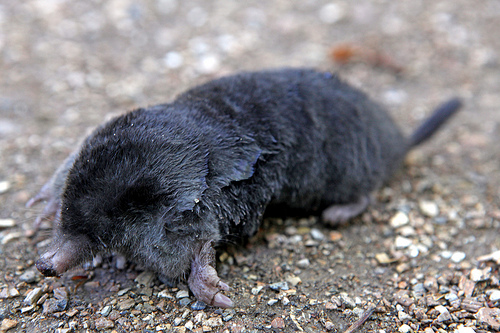Moles are not deaf or blind.
- Moles are mammals of small size, that have extremely good smelling capabilities, which make up for their poor eyesight; and they are native to Asia, North America, and Europe, excluding Ireland.
- Moles have the scientific family name Talpidae, a family of digging mammals, that also includes desmans and shrew moles.
- Moles generally have long claws and feature a second thumb adjacent to its first, that they use to dig numerous tunnels underground.
- The diet of moles consists mainly of worms, although they also consume mice and insects; and they are preyed on by cats, foxes and owls.
- Moles have a tail, and typically grow to be 12 to 15 centimetres (4.5 to 6 inches) in length and weigh between 250 to 550 grams (9 to 19 ounces).
Mole
Image courtesy of free photos/Flickr
- The fur of moles is thick and short, and is usually coloured a combination of brown, white, black and grey.
- Moles generally live alone underground in wooded, farmed or grassed areas, and the males are inclined to protect their territory from other males.
- Due to the haemoglobin proteins that exist in their blood, moles have the unique ability to reuse oxygen and endure significant quantities of carbon dioxide, which allows the mammals to live efficiently underground.
- The saliva of a mole can paralyse prey, owing to the natural poison it contains, allowing the mammal to collect food to eat at a later time.
- Moles are considered a pest in many urban communities and farming areas, as they burrow beneath the soil, which can cause damage to the roots of vegetation and crops; while on the surface, the piles of dirt (molehills) that are created from excess soil can destroy grass and plants, and have an unsightly appearance.
Bibliography:
Mole, 2013, A-Z Animals, http://a-z-animals.com/animals/mole/
Mole, n.d, Young People’s Trust for the Environment, https://ypte.org.uk/factsheets/mole/overview
Mole (Animal), 2015, Wikipedia, http://en.wikipedia.org/wiki/Mole_(animal)






